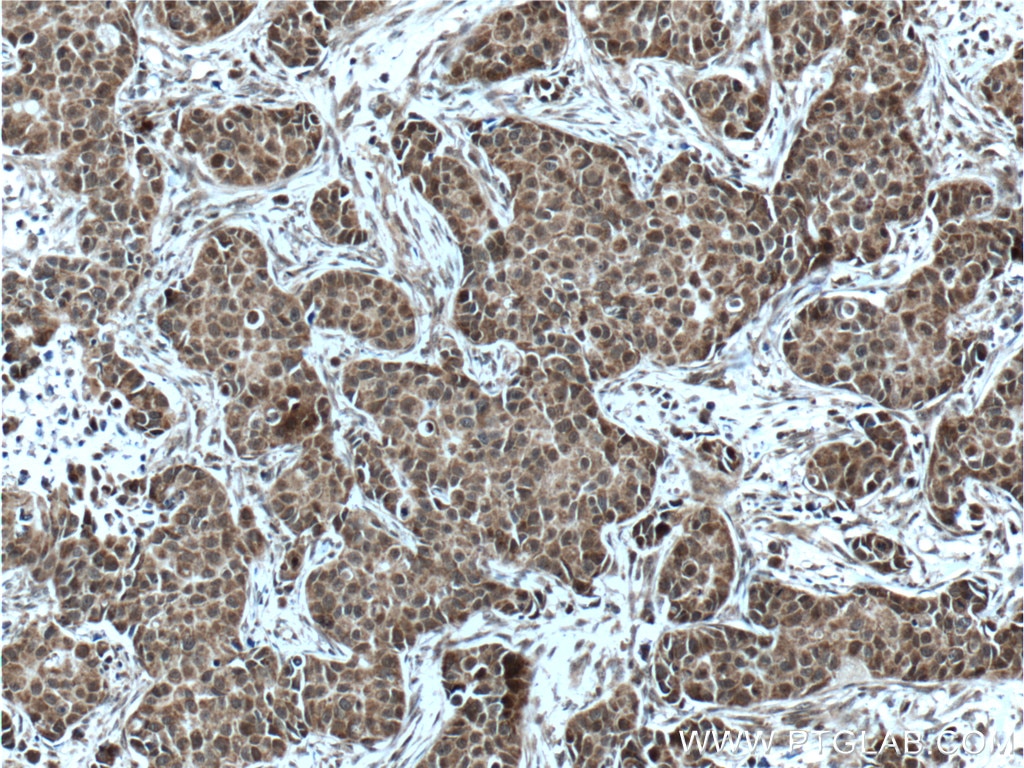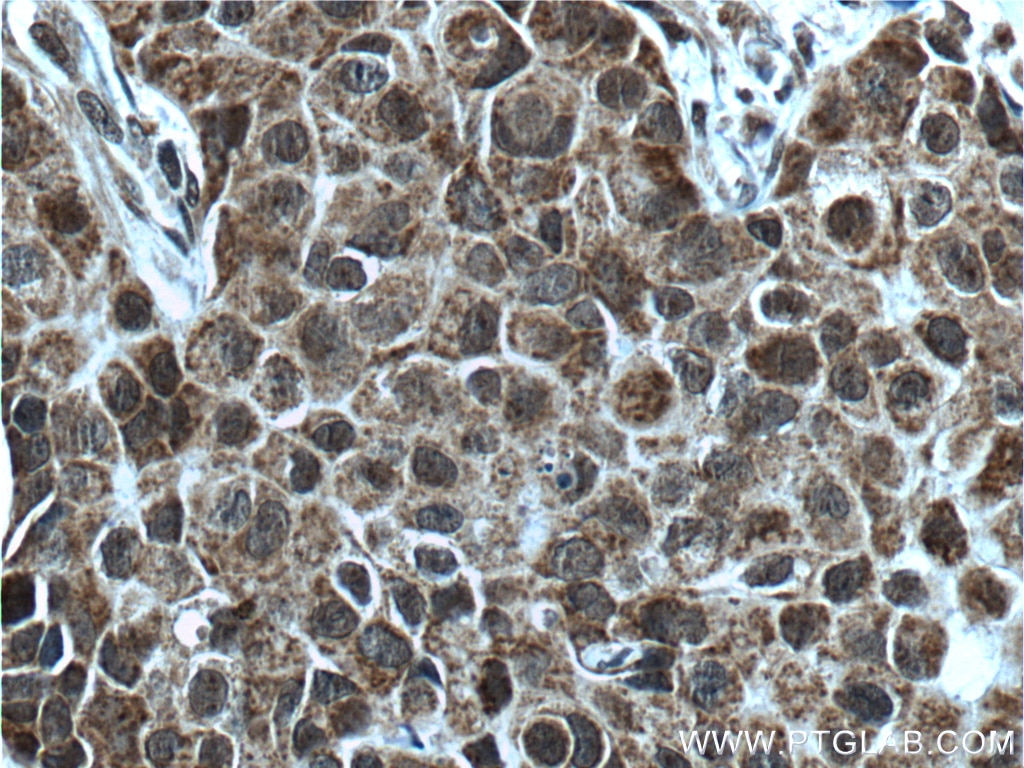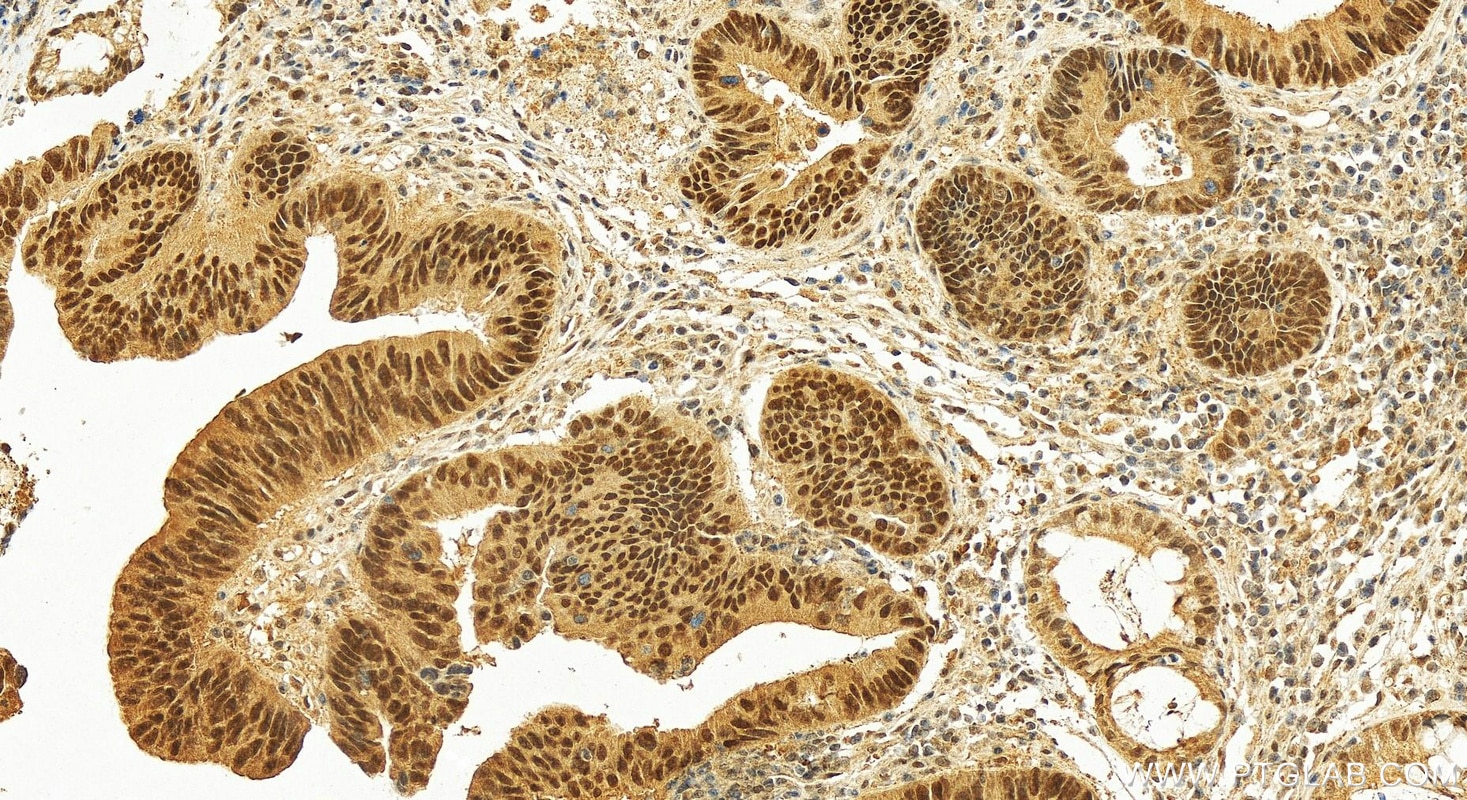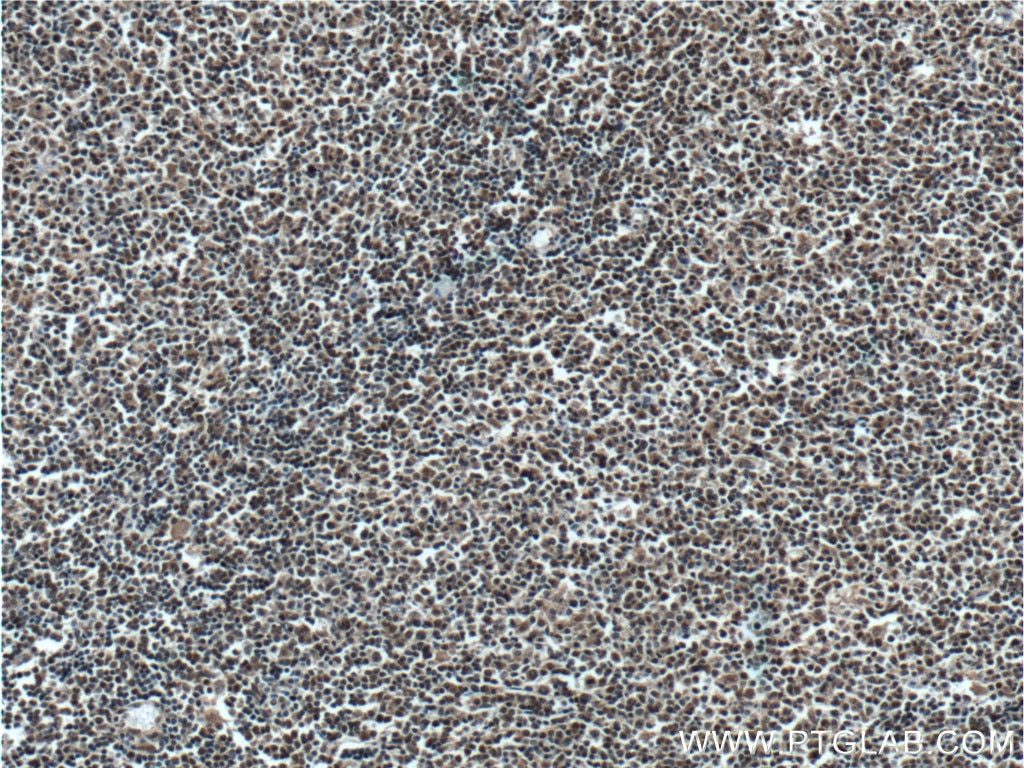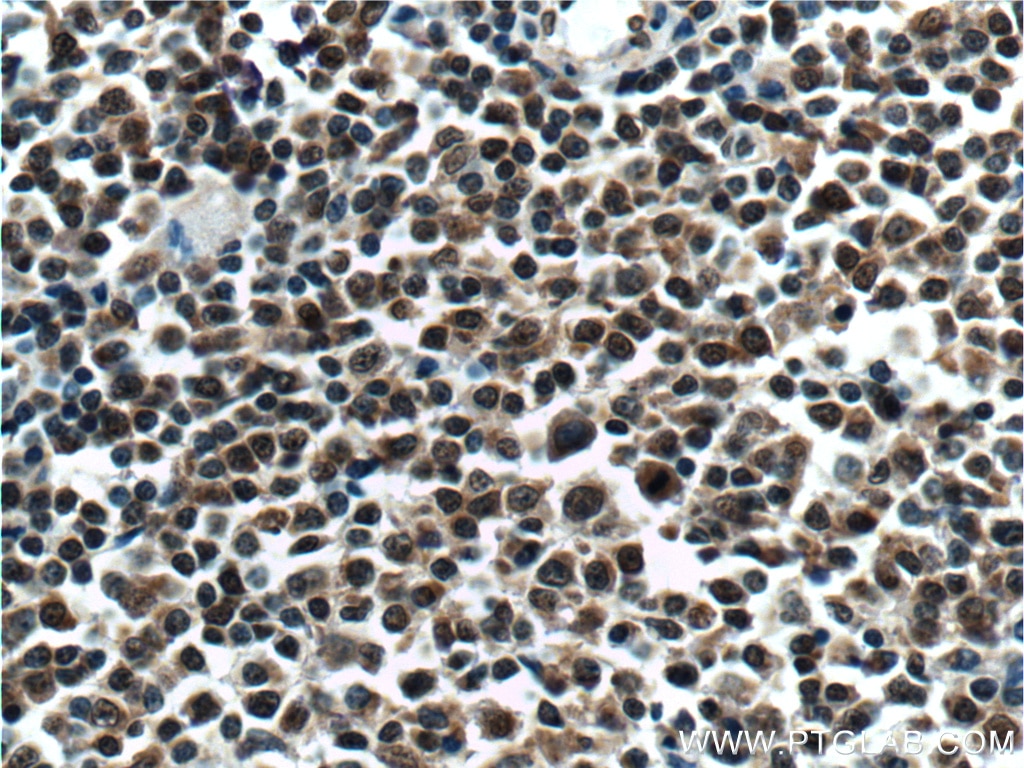- Phare
- Validé par KD/KO
Anticorps Polyclonal de lapin anti-KMT2D
KMT2D Polyclonal Antibody for WB, IHC, ELISA
Hôte / Isotype
Lapin / IgG
Réactivité testée
Humain et plus (1)
Applications
WB, IHC, IF, ChIP, ELISA
Conjugaison
Non conjugué
N° de cat : 27266-1-AP
Synonymes
Galerie de données de validation
Applications testées
| Résultats positifs en WB | cellules HEK-293, |
| Résultats positifs en IHC | tissu de cancer du sein humain, tissu de cancer du côlon humain, tissu de lymphome humain il est suggéré de démasquer l'antigène avec un tampon de TE buffer pH 9.0; (*) À défaut, 'le démasquage de l'antigène peut être 'effectué avec un tampon citrate pH 6,0. |
Dilution recommandée
| Application | Dilution |
|---|---|
| Western Blot (WB) | WB : 1:2000-1:16000 |
| Immunohistochimie (IHC) | IHC : 1:50-1:500 |
| It is recommended that this reagent should be titrated in each testing system to obtain optimal results. | |
| Sample-dependent, check data in validation data gallery | |
Applications publiées
| KD/KO | See 1 publications below |
| WB | See 4 publications below |
| IHC | See 6 publications below |
| IF | See 3 publications below |
| ChIP | See 3 publications below |
Informations sur le produit
27266-1-AP cible KMT2D dans les applications de WB, IHC, IF, ChIP, ELISA et montre une réactivité avec des échantillons Humain
| Réactivité | Humain |
| Réactivité citée | Humain, souris |
| Hôte / Isotype | Lapin / IgG |
| Clonalité | Polyclonal |
| Type | Anticorps |
| Immunogène | KMT2D Protéine recombinante Ag26195 |
| Nom complet | myeloid/lymphoid or mixed-lineage leukemia 2 |
| Masse moléculaire calculée | 593 kDa |
| Poids moléculaire observé | 593 kDa |
| Numéro d’acquisition GenBank | NM_003482 |
| Symbole du gène | KMT2D/MLL2 |
| Identification du gène (NCBI) | 8085 |
| Conjugaison | Non conjugué |
| Forme | Liquide |
| Méthode de purification | Purification par affinité contre l'antigène |
| Tampon de stockage | PBS with 0.02% sodium azide and 50% glycerol |
| Conditions de stockage | Stocker à -20°C. Stable pendant un an après l'expédition. L'aliquotage n'est pas nécessaire pour le stockage à -20oC Les 20ul contiennent 0,1% de BSA. |
Informations générales
KMT2D (a COMPASS/ Set1 family member; also known as MLL4, ALR, and MLL2) is the biggest H3K4 methyltransferase among the most frequently mutated genes in many different types of cancer (PMID: 34194626). The enzymatic function of KMT2D depends on a cluster of C-terminal conserved domains, including a PHD domain, two FY-rich motifs (FYRC and FYRN) and a catalytic SET domain. KMT2D has two frequently occurring genomic alterations: truncation and missense mutations. Loss of KMT2D is a bona fide tumor suppressor gene in FL and DLBCL. Kmt2d perturbed the expression of genes that sustain proliferation and survival, and the KMT2D protein directly binds and associates with an active chromatin conformation in negative modulators of the BCR and lymphocyte migration pathways, which in turn could affect B cell responses to antigen(PMID: 26366712).
Protocole
| Product Specific Protocols | |
|---|---|
| WB protocol for KMT2D antibody 27266-1-AP | Download protocol |
| IHC protocol for KMT2D antibody 27266-1-AP | Download protocol |
| Standard Protocols | |
|---|---|
| Click here to view our Standard Protocols |
Publications
| Species | Application | Title |
|---|---|---|
Cancer Immunol Res Molecular Subgroups of Intrahepatic Cholangiocarcinoma Discovered by Single-Cell RNA Sequencing-Assisted Multiomics Analysis. | ||
Oncogene Histone 3 lysine-27 demethylase KDM6A coordinates with KMT2B to play an oncogenic role in NSCLC by regulating H3K4me3. | ||
Cell Biosci Histone methyltransferase KMT2D cooperates with MEF2A to promote the stem-like properties of oral squamous cell carcinoma. | ||
Thorac Cancer RNF213 gene mutation in circulating tumor DNA detected by targeted next-generation sequencing in the assisted discrimination of early-stage lung cancer from pulmonary nodules. | ||
Transl Cancer Res Histone methyltransferase KMT2D mediated lipid metabolism via peroxisome proliferator-activated receptor gamma in prostate cancer | ||
Cell Death Discov Pseudogene ACTBP2 increases blood-brain barrier permeability by promoting KHDRBS2 transcription through recruitment of KMT2D/WDR5 in Aβ1-42 microenvironment. |

